.jpg)
ATL and BTL expenses play different roles when it comes to a company’s earnings. ATL costs directly shape the gross profit, reflecting your efficiency in revenue generation and primary operations management. A decrease in ATL expenses can boost the gross profit margin, enhancing overall profitability.
Business Finance Training
.jpg)
In this sample income statement, you can see that COGS is “above the line” of gross profit and operating expenses and taxes are “below the line.” Amounts shown in thousands. Nike Inc. reported $51.36 billion in revenue for the fiscal year ended May 31, 2024. Therefore, Nike’s above-the-line costs for the quarter were $28.48 billion, which the company labels cost of sales on its income statement. On the income statement, operating expenses as well as other expenses such as interest and taxes appear after gross profit. These expenses—such as crew wages, equipment rentals, and location fees—are essential to the technical side of production. Proper resource allocation ensures that the vision conceived in pre-production translates effectively onto the screen.
Understanding Above-the-Line and Below-the-Line Costs in Filmmaking
.jpg)
The items below the gross profit line are then below the line items that include operating expenses such above the line costs as facilities rent, salaries, and utilities. A different interpretation of the concept is that “above the line” refers to the gross marginearned by a business. The companies that produce goods, deduct the above-the-line-costs from sales to estimate the gross profit. Basically, the above-the-line cost is the company’s sales in a specific period minus the gross profit in that period. On an income statement of the manufacturing companies, there is a line after the gross profit. The detailed operating expenses which are hidden expenses are written after this line.
- It reports sales of $ 20 billion in a quarter and its gross profit in this period is $ 9 billion.
- Breaking down film costs often highlights below-the-line expenses covering essential production elements like crew salaries, equipment, and set design.
- Not only do service companies have no goods to sell, but purely service companies also do not have inventories.
- Also consider Expedia Inc., the travel website, which reported $3.2 billion in revenue in its second quarter of 2019 and an operating income of $265 million.
- Managers pay close attention to above-the-line costs in the short term because any wild fluctuation is an indicator that there is some inefficiency in the production process.
- These expenses turn creative visions into tangible reality through a complex web of technical expertise, equipment, and logistics.
- This has a direct impact on gross profit, which in turn is monitored to ensure it can cover the operating cost of the business.
What Are Above-The-Line Costs? What’s Included vs. Below-The-Line
Filmmakers, for example, refer to expenses as being above-the-line if they are related to budgets for directors, actors, writers, and below-the-line if they are related to production staff. In some circumstances, the term above-the-line refers to all income and expenses related to the normal course of business. In this case, any expense above net income would be considered to be above-the-line. Conceptually this makes sense, as the term “above-the-line” refers to all costs that must be incurred in order to produce a product or service. In filmmaking, one-third of budget overruns are preventable with strategic financial planning. The whole point is to maximize every dollar through smart allocation and careful preparation.
Recognition in Financial Statements:
The major costs including the cost of electricity, operation, maintenance, and depreciation and amortization are above the line of operating income. Above-the-line costs include all costs above the gross profit, while below-the-line costs include costs below gross profit. Some companies consider above-the-line costs to be costs above gross profit, while others consider them as costs above operating profit. Here the line refers to the line that divides gross profit from operating costs. For the companies providing services, this indicates to the line that separates the operating income from other expenses. Above-The-Line is used by the companies for characterizing their earning and expenses during normal operations that impact the profit but do not have any effect on the capital.
- A decrease in ATL expenses can boost the gross profit margin, enhancing overall profitability.
- These actions, while pivotal to the startup’s growth, don’t directly link to its services.
- When used in this way, below-the-line expenses include extraordinary and one-time expenses that are typically presented under net income on the income statement.
- Understanding the distinction between above-the-line (ATL) and below-the-line (BTL) costs is integral to successful film production budgeting.
- However, these income or expenses are not repeated, nor does it affect the company’s revenue or profit.
- This knowledge empowers producers to make informed decisions that streamline the filmmaking process and reduce unnecessary expenses.
Terms
During filming, the line producer will act as the eyes and ears of the producer to ensure the production runs on schedule and on budget. Line Producers must possess an in-depth knowledge of scheduling and budgeting, and of all the physical and technical processes of filmmaking. They need excellent industry contacts, and must command the respect of the production crew. Exceptional communication skills are required, as well as the diplomacy to balance the creative expectations of the director, artists and creative personnel with the financial resources available.
As it is not a manufacturing company there is not COGS or COS involved in the calculation of gross profit. All the costs above the operating income are considered to be the above-the-line-costs. It reports its operating revenue as $ 3 billion and operating income as 8 million in a quarter.
